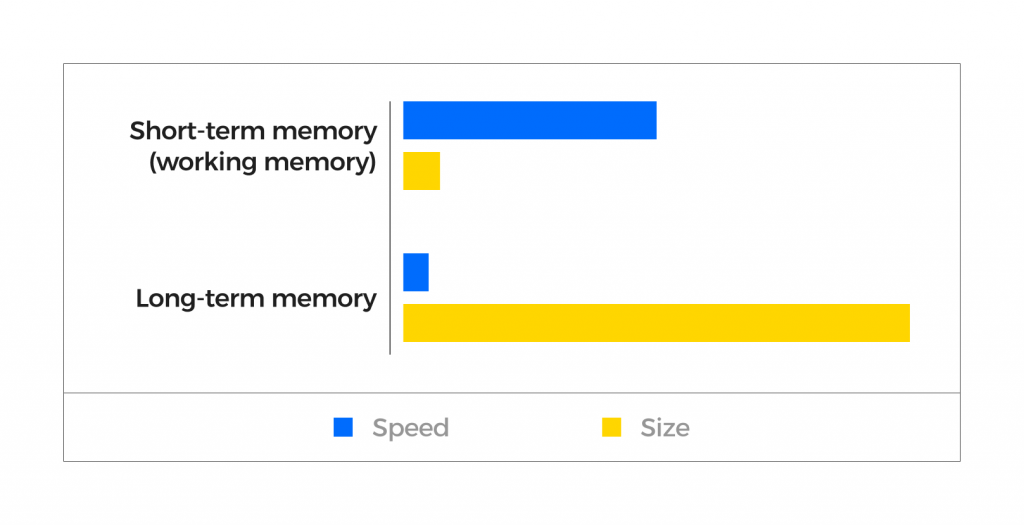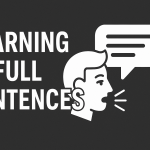When I studied for exams in college, I often used the so-called “three Z’s” method: in Polish, zakuć, zdać, zapomnieć, or “cram, pass and forget.” It worked great for taking exams on subjects that didn’t interest me at all. The three Z method, however, failed me when I started learning Portuguese. After all, learning a language is all about remembering as much as possible and not forgetting. That’s when I became interested in human memory and how to use it effectively to learn a language.
I started by highlighting words in books to filter out the most important key words and phrases. I also made lists on cards that I tried to repeat. Although I was memorizing more, I still wasn’t satisfied. I had heard about memory masters who are able to memorize huge strings of numbers, and I was angry with myself that I couldn’t do that. I started reading about mnemonics, spaced repetition, and other memorization techniques. I implemented them step by step. Quite quickly I noticed the results. For example, I found it much easier to remember words if I associated them with words I knew from other languages.
In the following article I will share my knowledge and experience with you. If you want to know how to hack your memory to increase your memorization efficiency then I invite you to read on.
Types of memory – short-term and long-term memory
At a high level, we have two systems at our disposal.
One is very fast and very short – we call it short-term memory or working memory. Using IT terminology, it can be compared to RAM, where we pay for the ultra-fast speed with a small capacity in which we can store at once a limited about of information – usually 5 to 10 items. This is the memory you would use if I gave you random numbers (e.g. 7, 2, 8) and asked you to recite them in reverse order. You probably feel it’s easy with 3 elements, but not so easy with 20.
The second type of memory is the so-called long-term memory – compare it to a hard drive. The one that seems to have virtually unlimited capacity, at the price of slow writing usually requiring many attempts.

A good example of this is the situation with the hotel room number, or the code for that room. After 2 days in the hotel we think we will remember it for the rest of our lives. However, in reality we forget quite quickly after returning home. For details about human memory, see the article on types of memory and how to use them for language learning.
Factors affecting the memorization process
There are many factors that affect the performance of your memory, but in language learning, four come to the forefront: concentration and attention, stress, emotions and age.
Focusing your attention on the information you are learning is key, and any distractions can hinder this process. To learn effectively, it’s a good idea to create an environment conducive to concentration, such as by turning off the phone or avoiding studying in front of the TV. An interesting way to improve memorization is also to change the place where you study; for example, instead of sitting at home, you can go to a coffee shop or library.
Stress has a negative impact on concentration and memorization ability, so it’s worth using relaxation techniques such as a short walk or conscious breathing methods that can help improve memory. On the other hand, emotions strongly associated with the material being learned make it easier to remember, which is especially helpful when learning about topics close to our interests or passions.
Mnemonics: What is it exactly?
Mnemonics are mental techniques that make it easier to organize and absorb information, which is especially useful when learning foreign languages. They allow you to master new words and language structures more quickly, making memorization more effective.
Effective learning requires that the information be memorized permanently and that it be easily reproduced when needed. The key is to activate both hemispheres of the brain, where the right hemisphere is responsible for creativity and imagination, and the left hemisphere is responsible for logical thinking and comprehension. Mnemonic methods engage both hemispheres at the same time, allowing for more efficient and lasting processing and memorization of information.
Here are some popular techniques you can use while learning:
- Memory Palace: this technique involves locating memorized information in mentally created, familiar spaces, such as a bedroom, where elements of the room (e.g., dresser, bed) serve as points to which you assign the associations you create. For example, to remember the Spanish question “Como se llama?”, one can imagine a scene on the dresser with a colorful sombrero and a llama, which facilitates memorization through visual and contextual associations.
- Spaced Repetition: repetition is the foundation of sustained memorization, and the most effective repetitions prove to be those that are properly spaced over time. The Spaced Repetition (or spaced repetition) method involves increasing the intervals between repetitions according to the difficulty and mastery of the material, allowing more effective consolidation of more difficult passages
- Storytelling: the more interesting and entertaining a story is, the easier it is remembered, making the use of stories, histories or fairy tales an excellent method of language learning. In addition, learning through stories that are already familiar, delivered in a new language, can significantly increase comprehension and memorization of the material. Studies have confirmed that learners of a new language who read or listened to familiar content, such as popular fairy tales or current news, were able to understand up to 20% of the new vocabulary.
The use of mnemonics in the Taalhammer app
The polyglots at Taalhammer have actually used a number of methods in the process of learning languages. Using years of research and their experience, they created a tool that utilizes the achievements of modern psychology for effective language learning. The recall of content is determined by an algorithm, so you don’t have to think about when you should review the material again before you forget it.
Artificial intelligence calculates the optimal moments for repetition. In addition, you can very easily create your own content to be able to say what you want, on the topics that interest you most. The whole-sentence learning method allows you to memorize vocabulary words, grammatical structures and sentence constructions, which are naturally, subconsciously stored in long-term memory and then recalled during conversation.







